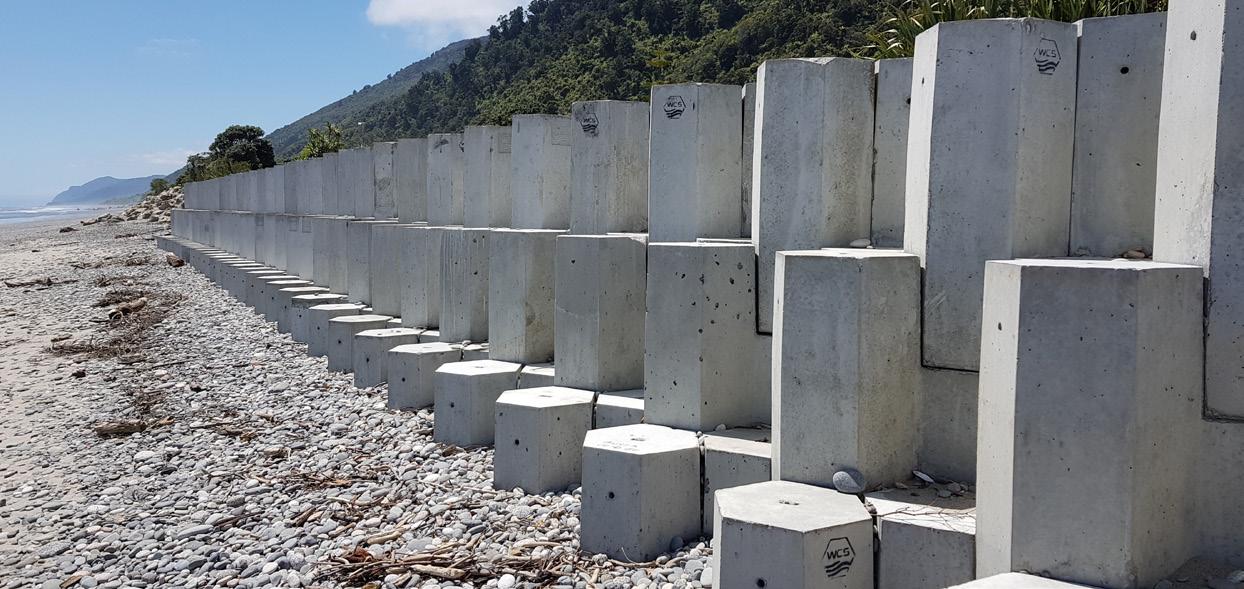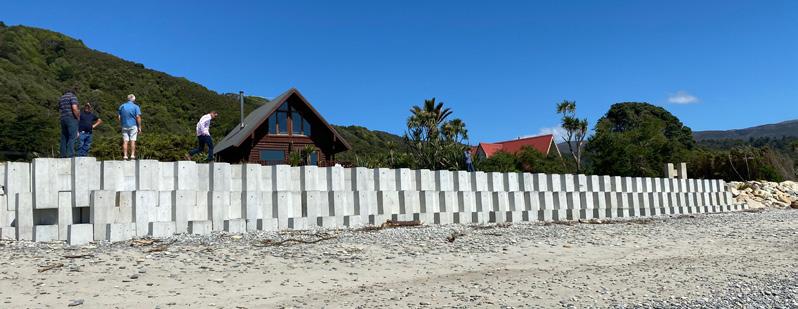
5 minute read
Decarbonising Concrete
CONCRETE NZ
The concrete industry is evolving, with recent achievements in emissions reduction set to continue via manufacturing and delivery initiatives that will enable net zero carbon concrete by 2050. You will have heard it before, but it is worth repeating - after water, concrete is the most widely used substance on Earth.
Advertisement
Concrete has shaped civilizations for centuries, and today it is indispensable in residential, commercial and infrastructure development. As a metaphor for strength, concrete offers whole-of-life benefits such as durability, thermal mass, recyclability, CO2 uptake, resilience to extreme weather, as well as being local. Such is our reliance on concrete that its decarbonising journey is one industry is excited to share, and which building officials will undoubtedly be interested in.
New Zealand Concrete
New Zealand is virtually self-sufficient in concrete. Ready mixed concrete is produced close to where it is cast, meaning it meets the sustainability principle of products being consumed near their place of origin. The concrete industry plays a key part in the country’s economy, employing over 7,000 people across 190 concrete plants and 22 cement facilities throughout the country. Record levels of quality assured concrete (some 4.5 million cubic metres annually) is currently being produced using locally sourced aggregates, recycled water and either locally manufactured or imported cement.
Emissions Reduction
Committed to helping New Zealand achieve its Climate Change Response (Zero Carbon) Amendment Act 2019 objectives, the concrete industry is halfway towards its target of at least a 30 percent reduction in CO2 emissions by 2030. Sustainability consultants - thinkstep - confirm that emissions from cement have been reduced by 15 percent between 2005 and 2018. This reduction was achieved in part through increased use of low carbon Supplementary Cementitious Materials (SCMs). Industry has also enhanced its environmental practices by adopting synthetic vehicle fuels, as well as diverting/recycling waste streams away from landfill and into usable products. Supplementary Cementitious Materials (SCMs)

The increasing global use of low carbon SCMs to partially replace Portland cement and therefore directly reduce embodied CO2 makes ecological sense. SCMs are derived from lower embodied energy and recycled materials, and can result in environmental benefits, improved concrete performance, and long-term cost advantages. These are ground granulated blast furnace slag (from steel manufacture), fly ash (from coal combustion) or microsilica. Volcanic ash (a natural pozzolan) from New Zealand’s Volcanic Plateau is another type of SCM. To allow increased uptake of SCMs,

Concrete NZ has completed a Building Research Levy funded project to assess classification techniques, along with the fresh and hardened performance of SCM concrete. Outputs will inform a review of the cement Standard.
Gearing-Up Supply
Industry commitment to low carbon concrete via SCMs is clear, with Holcim New Zealand constructing a new facility at the Ports of Auckland to accommodate what will be a significant increase in its use of cement replacements. Mount Maunganui based cement supplier HR Cement, has commissioned a new grinding mill for the processing of either slag or natural pozzolans to meet inevitable demand.
New Zealand’s end-to-end cement manufacturer, Golden Bay Cement, will also be utlilising SCMS as part of its low carbon offerings. In short, the low carbon concretes enabled through cement replacements will be a real ‘game changer’ in the materials space, and in turn hugely significant for the future built environment.
Alternative Fuels
Considerable reductions in energy use (and therefore CO2 emissions) have been realised in New Zealand over the past decade by improving the efficiency of the cement kiln operation. Golden Bay Cement uses alternative waste fuels and is examining the practicalities of increased supplementation. A significant proportion of fossil fuel used at its Northland facility has been substituted with wood waste (biofuel), while the use of up to 3 million waste tyres each year will reduce coal consumption by 15 percent, and in turn CO2 emissions by around 13,000 tonnes.
Future Goals
Under the Concrete NZ banner, the concrete industry has developed a medium-term vision which states that by 2030 it will be recognised as a sustainable, socially responsible and profitable participant in the construction sector, and have reduced its global warming potential by at least 30 percent of 2005 levels, by: • Supplementary cementitious materials (SCMs) • Efficient energy sources for manufacturing and delivery processes • Driving waste minimisation in manufacturing, delivery and construction
• Using recycling processes to minimise the use of virgin materials
• Adopting new technologies where appropriate • Being engaged with local communities
Beyond 2030, the New Zealand concrete industry is targeting net zero carbon by 2050. To enable these goals, Concrete NZ has adopted an Environmental, Social and Corporate Governance (ESG) approach, which concerns the impacts of a business or sector on people and the environment, and how the external world impacts on the business or sector.
Part of a global strategy, the New Zealand concrete industry’s Net Carbon Zero Roadmap will set out how, in collaboration with stakeholders and policymakers, it will fully decarbonise. To be launched in New Zealand during early 2023, the international Roadmap approach has been applauded by Greenpeace as a "defining moment" that illustrates the "willingness of industry to be part of the solution in global climate protection.” Also worth highlighting, is that the United Nations’ Inter-Governmental Panel on Climate Change (IPCC) has recognised concrete’s ability to permanently absorb atmospheric CO2, referred to a “carbon uptake”, which means the net embodied carbon of concrete buildings and infrastructure is much less than had previously been calculated. A pan-industry Sustainability Report is also being developed by Concrete NZ. This will involve conducting an assessment on the industry's impacts on people and the environment. The topics that will be reported on, and compared to United Nations’ Sustainability Development Goals (SDGs), will be energy and emissions, freshwater, built environment, health & safety, socio-economic benefits and waste & the circular economy.
Final Word
At the forefront of Concrete NZ’s work are good information (including more Environmental Product Declarations EPDs) and constructive engagement with government and stakeholders, as we pursue increasing recognition of the concrete industry’s work to enhance its environmental and social impact. Improved policy settings and better knowledge of concrete among specifiers, designers, contractors and building officials, will be measures of success.
By Rob Gaimster, Chief Executive - Concrete NZ
For any questions or for more information email admin@concretenz.org.nz or call 04 499 8820.
Images. Westlock Concrete Solutions Ltd (WCS).










